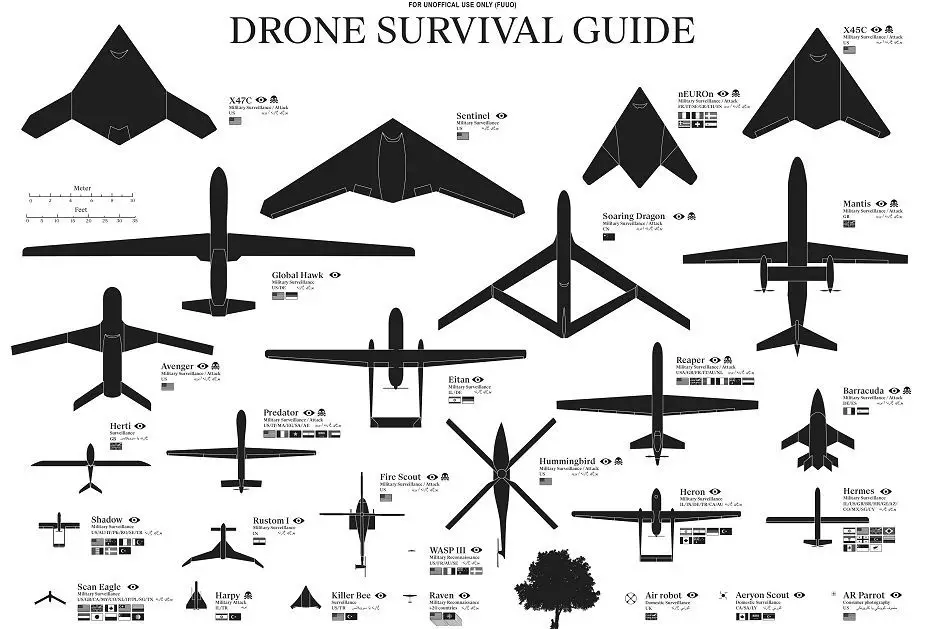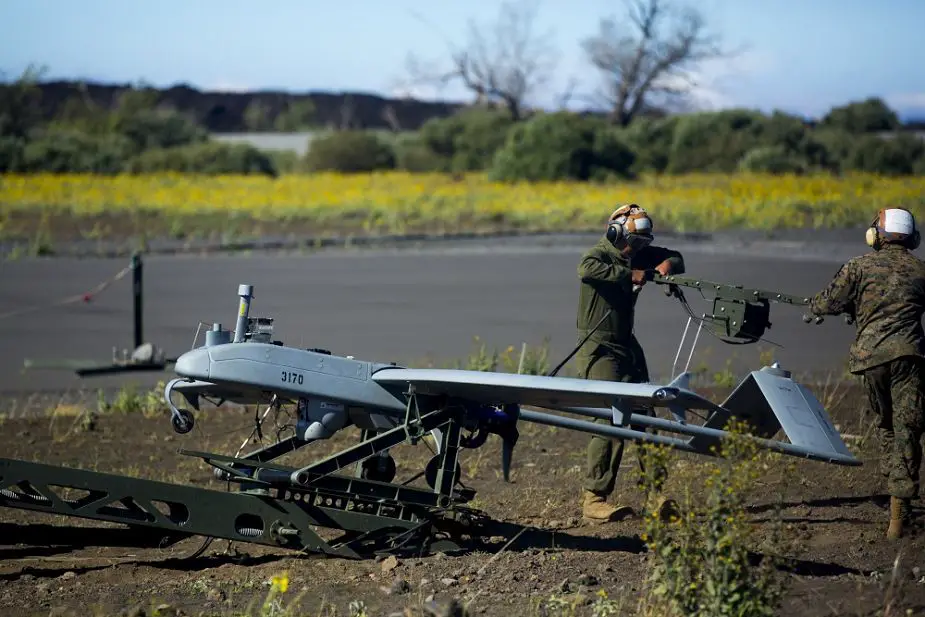The development of drones is a key element of modern armed forces. Drones have been rapidly developing of late and are used by developed nations also for combat missions. Artificial intellect is developing, as well as the range of missions and deployment methods of the drones.

Drone Survival Guide (Picture source Internet)
Single basic platforms are created for engagement in all theaters of warfare to increase the capabilities of unmanned forces and the speed and flexibility of reaction to emerging threats. Drones are becoming more autonomous. Prospective craft already have air interception functions and support to ground forces.
Drones have been engaged in an integrated reconnaissance force for electronic warfare missions, communications and reconnaissance. Their capabilities to jam adversary air defense are growing. A drone fuel tanker has to be launched into batch production in the near future. Modifications are created for rescue and evacuation missions, as well as airlift.
Unmanned control, hypersonic speed, electronic element base of onboard equipment built on photonic technologies and the use of optic-fiber communication lines are the basic requirements to the sixth-generation fighter jet in the United States.
Drone combat engagement concept includes the so-called swarm architecture for the use of a group of vehicles which exchange reconnaissance information and agree strikes. The technology helps break through existing and prospective air defense.
Drones have to develop and be included into the air and missile defense system and strategic strikes also with nuclear weapons. The United States leads drone design and production at present. It plans that unmanned vehicles will comprise 45 percent of all air attack means in 2025. So far, contractors of the US Department of Defense have produced over 30 thousand drones.

U.S. Marines assigned to Unmanned Aerial Vehicle Squadron 3 (VMU-3), "Phantoms," prepare an RQ-7B v2 Shadow for an aerial reconnaissance during Lava Viper 17.1, at Cooper Air Strip aboard the Pohakuloa Training Area, on the big Island of Hawaii, Oct. 19, 2016. (Picture source U.S. DoD)
Let’s briefly analyze the experience of drone engagement and problems faced by potential Russian adversaries and thus strictly determine development guidelines to avoid mistakes.
Reconnaissance obtains target information directly in the combat area and drone operator who stays thousands of kilometers away receives a lot of contradicting reports. As a result, five out of ten missile launches by US drones hit civilians.
Besides, the big distance between the drone and the operator adds physical limitations on the speed of the signal. The situation may change a lot in several seconds and the target will escape the strike.
At present, the United States has over two thousand operators capable of dealing with combat drones. It is necessary to train at least another 15 thousand men to operate most of the vehicles. It is a major problem. Thus, the United States is in a deadend for the moment, but the trend is likely to change as artificial intellect develops.
Smart drones will leave no chance to manned aviation in the coming decades due to the development of artificial intellect and the absence of any restrictions caused by the presence of the pilot: overload, reaction speed to information, biological protection, life-support, etc.
In July 2016, a new artificial intellect system designed by the Cincinnati University in the United States quickly overplayed combat pilot Jin Lee on a precision simulator of air combat. The experienced pilot lost all fights with the computer and failed to win at least one point for adversary destruction. He admitted the intellect was fast and mortal. ALPHA artificial intellect won even when the speed, arms and radar capabilities were restricted. The designers said ALPHA can choose the desirable tactic 250 times faster than a human although its computer has a modest capacity. The United States wants to install ALPHA on unmanned aerial vehicles and use it for pilot training.














